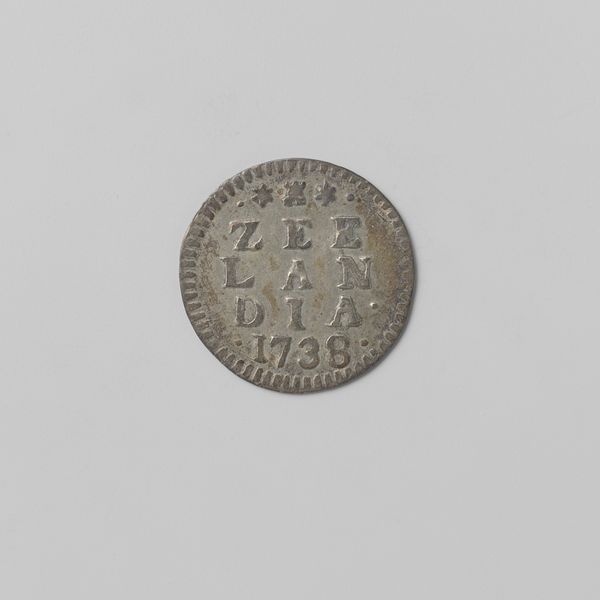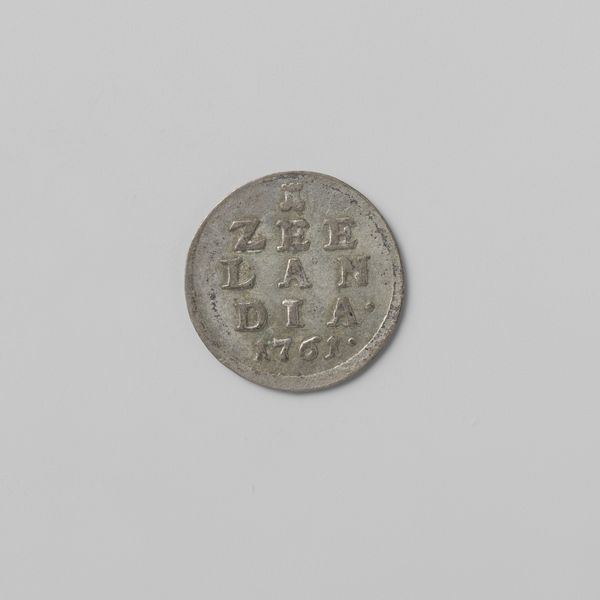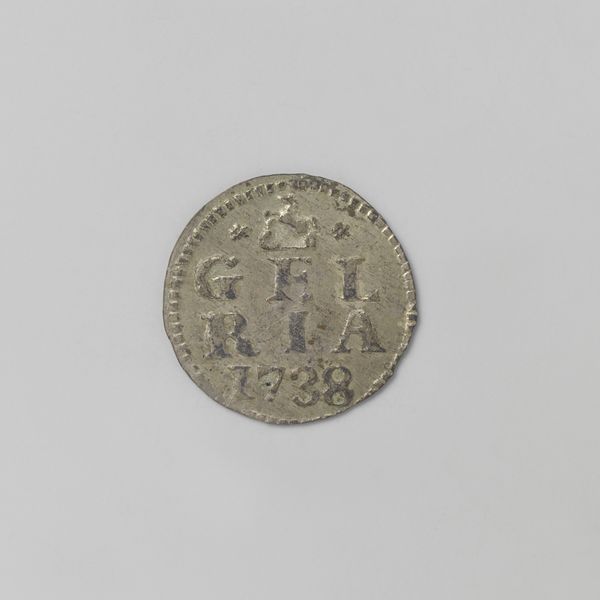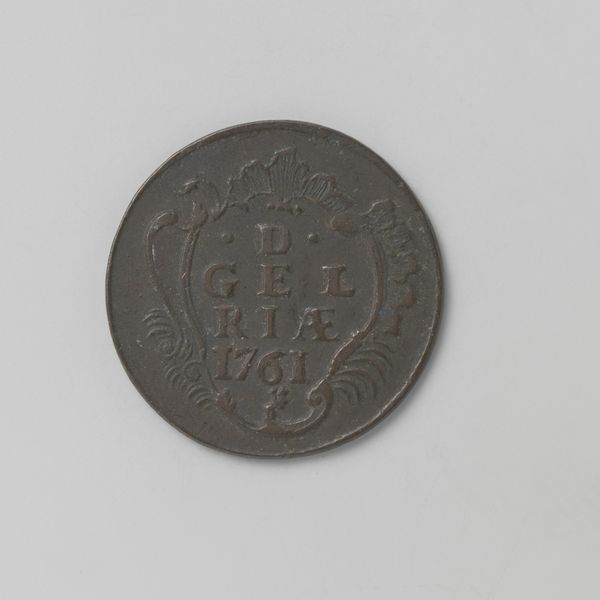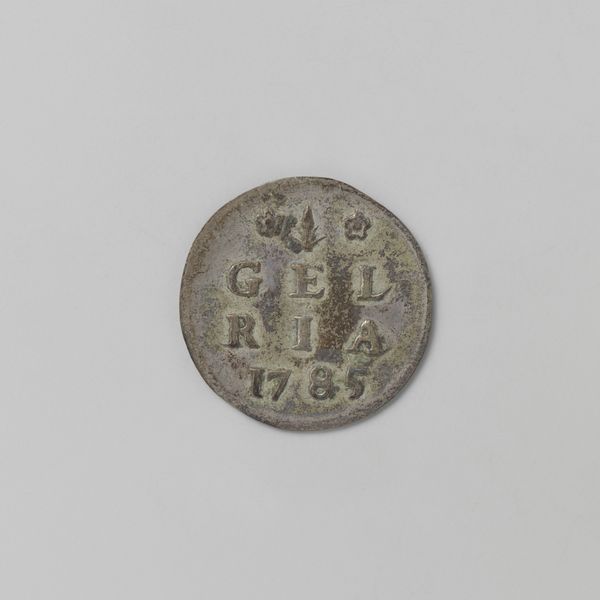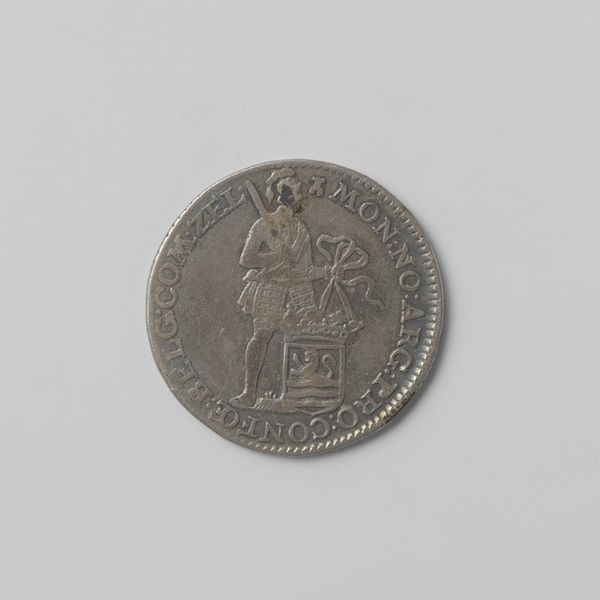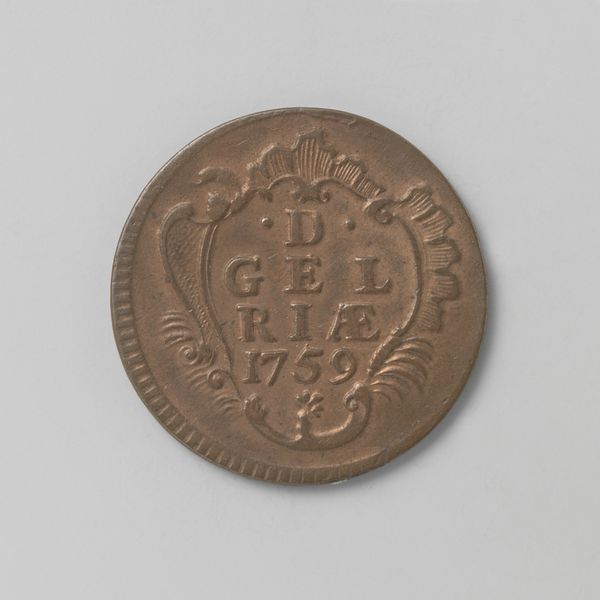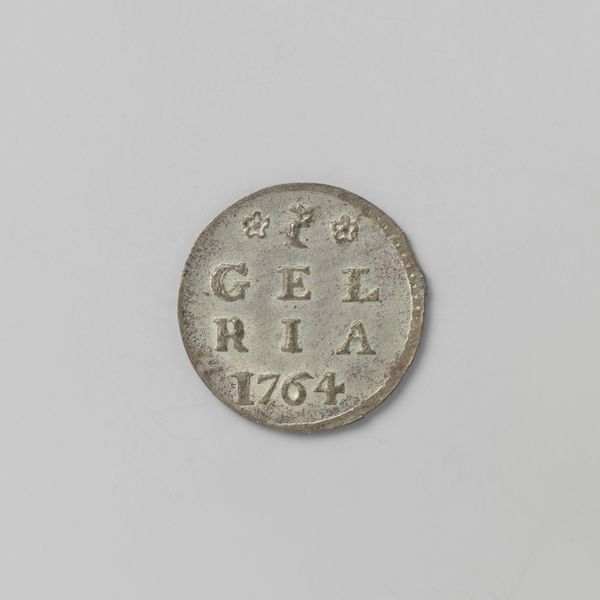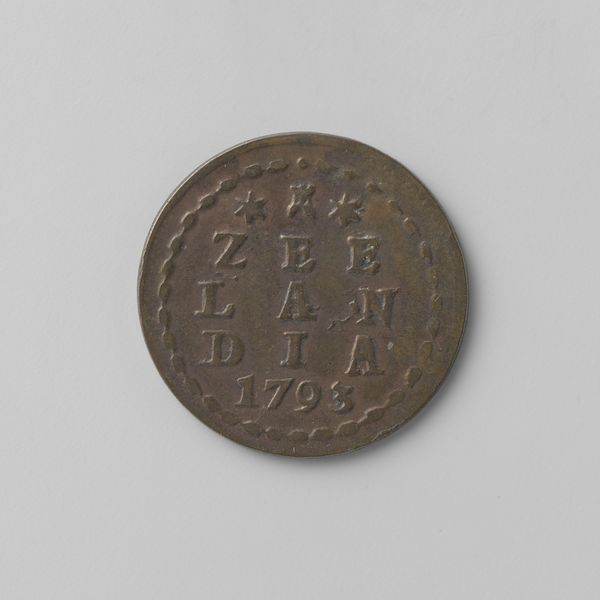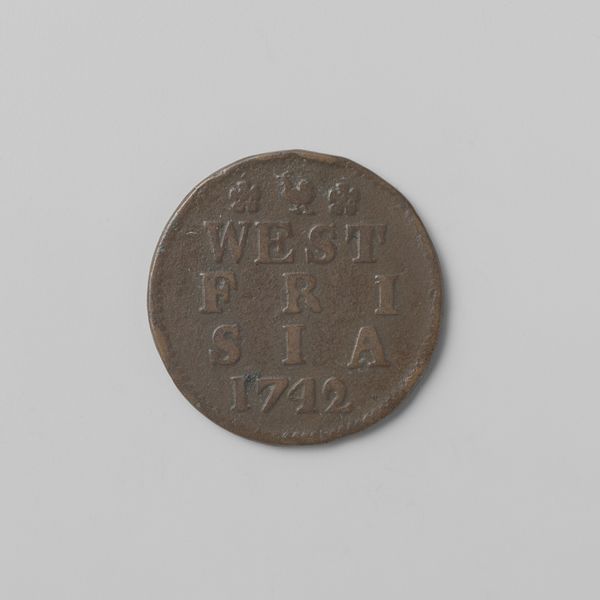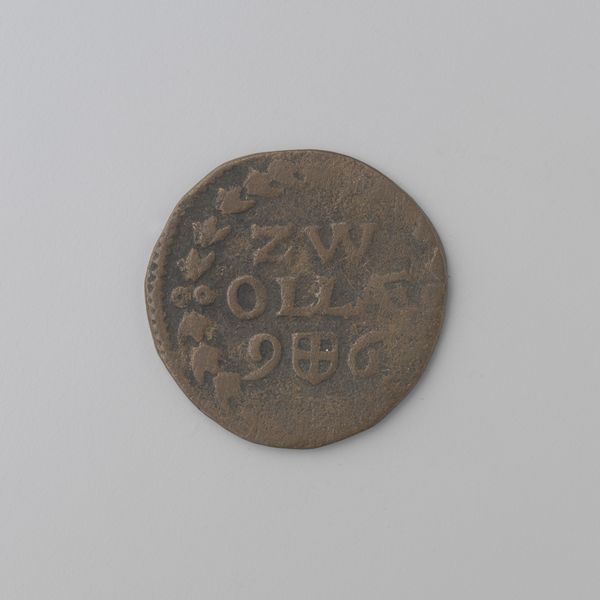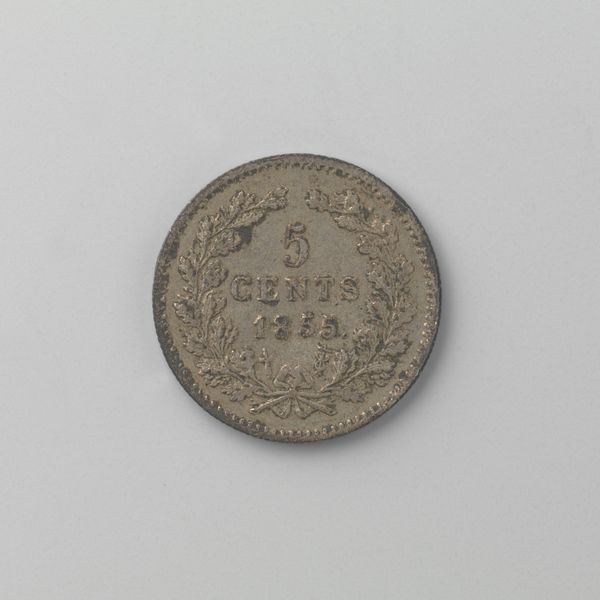
print, metal, engraving
#
dutch-golden-age
# print
#
metal
#
appropriation
#
embossed
#
engraving
Dimensions: diameter 1.8 cm, weight 1.55 gr
Copyright: Rijks Museum: Open Domain
Curator: Here we have a fascinating little artifact: a silver "afslag" – essentially a trial strike – of a Gelderse halve duit, dating back to 1756. Gelderland, of course, refers to the province within the Netherlands. Editor: Tiny but mighty! It's got this quiet intensity, like a forgotten spell someone once cast over their grocery money. And that silver... it has a weight of history about it, doesn't it? Curator: Indeed. Examining its production in the context of the Dutch Golden Age, we have to acknowledge the socio-economic hierarchies it represents. Coinage like this signifies not only economic power but also the control and dissemination of visual language supporting the ruling classes. Consider the impact of repeatedly seeing these symbols and names – "Gelria," the Latin name for Gelderland, reinforced through daily exchange. Editor: Oh, absolutely. But stepping away from the discourse for a sec, those little flowerettes dotting the top and bottom… they’re so darn sweet against the serious pronouncements etched into the surface. Almost a subtle act of rebellion from the engraver, perhaps? A wink in the face of authority? Curator: That's a compelling interpretation. The juxtaposition of delicate floral motifs alongside the bold pronouncements of the region does create a tension. While purely speculative, we could read this as an assertion of the region's natural beauty, almost a claim against purely monetary worth – perhaps alluding to inherent values beyond mercantilism. Editor: Right? Or just because pretty flowers are cool, and make even tiny coins less dreary! Speaking of which, what is that underneath "1756"? Is that some sort of bird or insect? Curator: You have a keen eye. That would be a small depiction of an eagle, used here as a heraldic emblem, symbolising power and vigilance. Its placement here reaffirms the authority that this coin carries as legal tender. Editor: Such serious symbolism on something that probably bought you, like, a loaf of stale bread back then. It's charmingly absurd when you think about it! Almost Kafkaesque. Curator: I see your point, but I would like to propose an interpretation, using the context of Dutch mercantilism and colonial exploits during the 1700s, focusing our understanding on… Editor: Woah there! Maybe, sometimes, it’s just a pretty little piece of shiny metal with some flowers and a grumpy eagle. Sometimes the poetry is enough, you know? Curator: Well, regardless, it highlights the convergence of art, politics, and daily life in the 18th century. It certainly encourages a deeper exploration into both official histories and subjective readings of value. Editor: Agreed! I think I might just carry it around for a bit. Get in touch with my inner 18th-century capitalist.
Comments
No comments
Be the first to comment and join the conversation on the ultimate creative platform.

